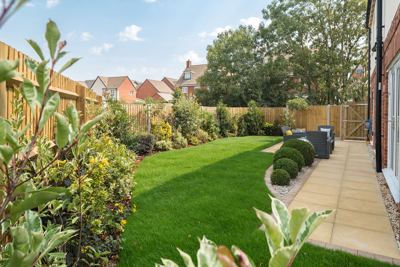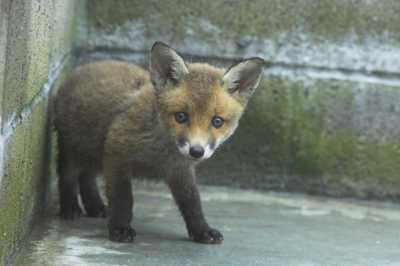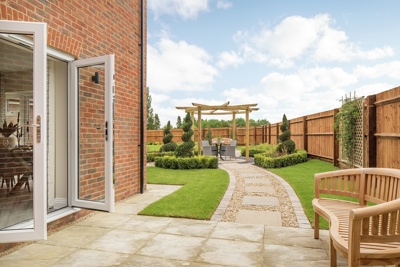Fun fact – in line with our Sustainability Strategy, which sets out our mission to reduce our contribution to climate change, we have created brand-new Welcome Packs for Cala homebuyers, partnering with brands that share our ethos of being better for people and the planet, with the aim of reducing plastic and waste wherever possible. They include goodies from Wildlife World to help kickstart your very own sustainable outdoor space.
Here’s their guide to going green in the garden…
Did you know private gardens make up 10 million acres of green space in the UK? By making smart decisions in our gardens we can be part of a bigger community trying to help save wildlife and be environmentally friendly.
The best way to be more sustainable outdoors is to garden for wildlife first. Instead of thinking about garden furniture or any design elements, first and foremost prioritise what wildlife need and what you can provide and then incorporate this into your garden design. You can also look at ways of cutting down on the use of products and equipment that are damaging to the environment.
These are our top tips for creating a wildlife-friendly garden:
1. Introduce trees, hedgerows and bushes
Having a variety of trees and shrubs in your garden can provide shelter and food for birds and animals, whilst trees with flowers and berries are invaluable for pollination and are another great food source. If you grow different types of greenery, it ensures lots of different animals are attracted and accommodated. If you don’t have space for trees, then a log pile is a fantastic way of offering shelter, habitat and food for wildlife from bugs to hedgehogs and birds.
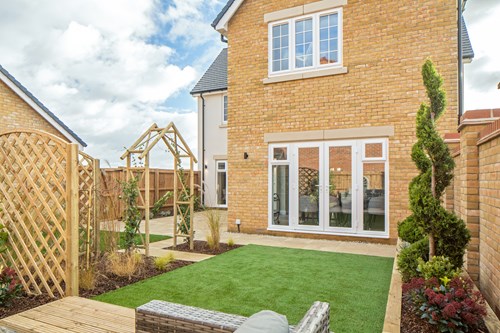
2. Compost heaps
Having a compost heap in your garden is not only good for getting rid of your kitchen scraps, but it also provides a home and food pile for wildlife. In a just a few months it will also provide rich compost to use on your garden. You can build or buy a compost container, then simply choose a sheltered spot and pop in a few logs or twigs to first aerate the compost. Try to leave a gap underneath by raising the heap onto bricks, to allow for hibernation and sheltering spots for toads and hedgehogs. Heaps need a mixture of grass cuttings, weeds, kitchen scraps, dead leaves and even shredded newspaper.
3. Remove pesticides, netting and chemicals
Using garden chemicals should always be a last resort when you need to control a problem. Looking after plants can help minimise the need and you can choose plants that are pest and disease resistant so there is no need to use chemicals. Pesticides are also harmful to animals and your garden’s water and soils. Introducing or encouraging ladybirds into your garden is a great way to manage aphid populations, and hedgehogs are fab at munching slugs and snails!
4. Use tools and features made from natural materials
When choosing tools and decorative features for your garden, try to go natural. Look out for ‘FCS certified’ items, which means the wood used comes from sustainable sources certified by the Forest Stewardship Council. Or even better, make your own garden features from recycled or upcycled wood and other items.
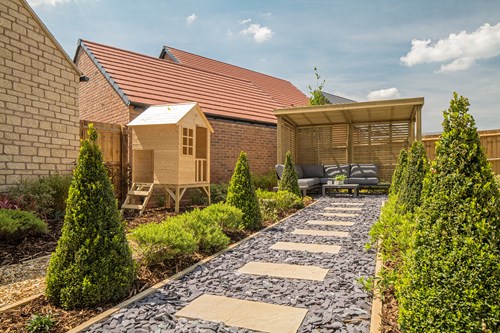
5. Plastic out, Fairtrade in
Try to avoid using plastics in your garden at all, or if you do need to use them, try to choose second-life plastic or recycled plastic. You can also try to use Fairtrade products in your garden – for example, we stock a range of hedgehog houses, bird nesters and bee skeps all hand made by artisan women in Bangladesh. We pay a Fairtrade price for these products, helping to fund the survival of these women and their children in rural communities who are struggling with poverty. The products are decorated using colourful, recycled sari material and look amazing in the garden.
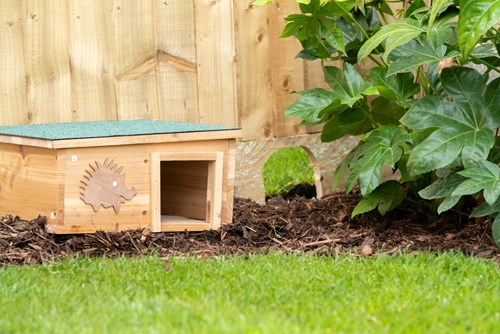
Will you be creating a sustainable space in your garden? For more tips visit the Wildlife World blog, or browse their online shop for wildflower seeds, animal homes and plastic-free gardening essentials to kickstart your green garden journey.
We’re on an exciting journey to dramatically transform our business and embed a culture of sustainability in everything we do. We know we can do more, and by the end of 2022 our goal is to have formulated a strategy and action plan to enhance biodiversity across our developments.
Visit our Sustainability page to view the work we are doing as a business to reach our goal of becoming operationally net-zero carbon enabled.
Share your gardening efforts and any more sustainability tips with us on Instagram @calahomes.

